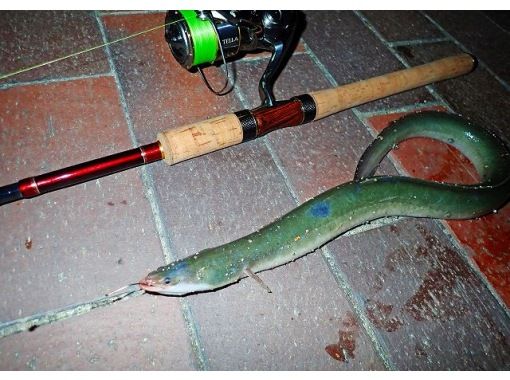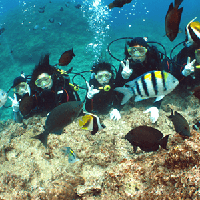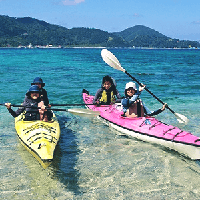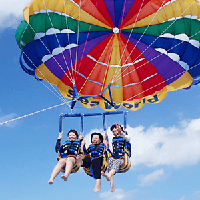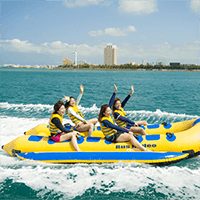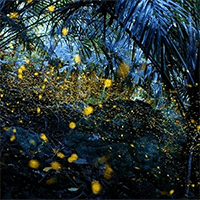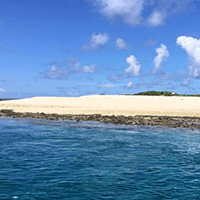List of fishing
- Age 3~Age 100
- 3~4 hours
- 09:00
Experience rummaging around the rocks in Kanagawa Prefecture, and observe shellfish, crabs, octopus, sea urchins, sea slugs, fish, and hermit crabs. This tour takes place around 2 hours before and after low tide. The host will provide all the equipment, including waders, long sleeves, silly boots, nets, cases, and gloves for children and adults. Please wear a swimsuit (waders over your everyday clothes from October onwards) and marine shoes. What to bring: Marine shoes (from the end of March to October), swimsuit, rash guard, spats, drinks, hat, rucksack, plastic case for taking home + bubble (battery-powered oxygen supply machine) What to prepare on your side: silly boots (from November to mid-March), net, storage bucket On the day, please take the Keihin Kyuko line + bus or car to the designated point. Meet 2 hours before low tide, explain the precautions, play on the rocks, and finally hold a briefing on the creatures. Please bring a plastic case if you want to take home the fish. A bubble will be required for the fish. The start and next time will change depending on the time of low tide, so please be sure to check before coming to the meeting place. We look forward to your participation. The minimum number of people listed is 6 or more children, not adults, due to the 4-hour round trip travel time from Tokyo and transportation costs. That's all, we look forward to your participation. Nogawa Nature School Sonoda
- Age 3~Age 70
- 2~3 hours
- 09:00 / 11:30 / 14:00 / 16:30
Held from spring to autumn Fishing for Japanese eels in the brackish waters of rivers Part 1: 8:00-10:30 Part 2: 10:30-13:00 Part 3: 13:30-16:00 Part 4: 16:00-18:30 This is a tour to fish for eels at the mouths of rivers that run through Tokyo. Japanese eels are born in the western waters of the Mariana Islands. They grow in rivers not only in Japan but also in East Asia, including China, Taiwan, and the Korean Peninsula, and are known to return to the Mariana Islands to spawn. Japanese eels (Anguilla japonica), which belong to the Anguilla genus of the eel family, are widely distributed in East Asia, including Japan, China, Taiwan, and Korea. In Japan, they mainly live south of Honshu, but there have been cases of them being caught in Hokkaido. Rental tackle, fishing rod, and equipment are included, so you can participate empty-handed. Two patterns of fishing will be done: casting fishing and plastic bottle tackle fishing, using earthworms as bait. While waiting for the tackle, you can fish for goby at your feet. The main target is eels, but sometimes you can also catch goby, crabs, and seigo. The tour lasts about 3 hours. Please bring a headlamp, a handy light, and drinks. *If you want to take the fish home, please bring an aeration device (battery-powered bubbler) to prevent oxygen deficiency, a plastic case or fishing bucket to prevent escape, and a cooler box. By train: 15 minutes walk from JR Joban Line or Tokyo Metro Chiyoda Line By car: Please use a nearby parking lot Meeting place: Near the Seven-Eleven Katsushika Kosuge 1-chome store. We will send you a map in advance, so please walk to the point. Migration of Japanese eels Japanese eels spawn in the summer in the waters west of the Mariana Islands in the Pacific Ocean. After hatching, they become willow-leaf-shaped larvae called leptocephalus. Glass eels are carried by ocean currents and reach East Asia in about six months, then transform into long, cylindrical glass eels and ride the high tide into rivers. After that, their transparent bodies start to take on color, and they are called yellow eels. During the yellow eel stage, eels grow large, and eat a variety of foods, including shrimp, crabs, small fish, and insects. The environment in which Japanese eels spend their growth period is wide, from coastal areas to the upper reaches of rivers, and includes not only freshwater areas but also brackish water and seawater. After several years to a dozen years, when they grow to a size of about 40 cm or more for males and about 50 cm or more for females, they begin to mature and are called silver eels. Silver eels leave their familiar rivers and coastal areas and travel to spawning grounds from autumn to winter. They reach the spawning grounds in the Marianas in about six months, spawn, and then end their life. PS: The minimum number of participants is 5 or more.
最近チェックしたプラン
Please wait a moment
![Popular No. 3 [Kanagawa/Miura] *For families *Rock fishing *Introducing Kanagawa's hidden gems, guided by a weekend resident of Miura for 20 yearsの画像](https://img.activityjapan.com/10/47307/10000004730701_atFOJjl6_3.png?version=1708934162)
